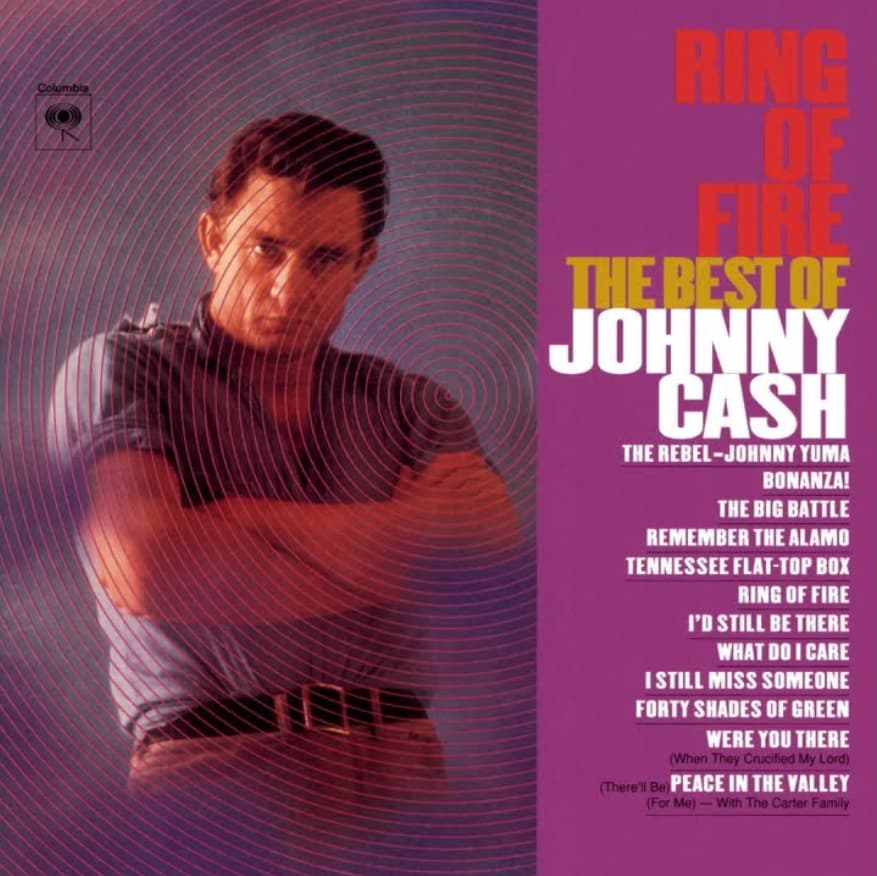
The song tells the powerful, and often agonizing, story of falling hopelessly in love.
You hear that unmistakable mariachi horn fanfare, a sound both bright and haunting, and you’re instantly transported. It’s a sound that evokes the blistering desert heat and the swirling intensity of a love that can’t be contained. Johnny Cash’s “Ring of Fire,” released in April 1963, isn’t just a song; it’s a testament to the kind of all-consuming, transformative love that many of us have felt, a love so powerful it feels like a fire you’ve willingly jumped into.
The song was a massive hit. It blazed its way to the top, reaching number 1 on the Country Singles chart and peaking at number 17 on the Pop Singles chart. Its success was so significant that it was the title track for his 1963 album, Ring of Fire: The Best of Johnny Cash, an album that earned Cash his first Gold LP. But the song’s commercial success pales in comparison to the deeply personal and famously disputed story behind it.
The most widely accepted version, and the one that has become part of the Johnny Cash and June Carter legend, is that June wrote the song with songwriter Merle Kilgore. June was on tour with Johnny and was struggling with her feelings for him. Johnny was still married to his first wife, and June was torn by her intense love for him and the guilt she felt over their relationship. The lyrics, with their imagery of “burning desire” and a “ring of fire,” were her way of expressing this emotional torment. She reportedly got the idea from an old poetry book belonging to her uncle, A.P. Carter, where she found the line, “Love is like a burning ring of fire.”
However, there’s another, more contentious side to the story. Johnny Cash’s first wife, Vivian Liberto, disputed June’s account in her autobiography, stating that Johnny actually wrote the song with Kilgore and gave June partial credit because “she needs the money.” Liberto claimed that the song was not a metaphor for love, but a more carnal tune about a private female body part. This account has been largely dismissed by many as the bitter words of a wronged woman, but it adds another layer to the song’s history, a touch of scandalous reality that, in a way, feels very much like the “Man in Black” himself. Regardless of its true origin, it’s clear the song’s power lies in its raw, honest depiction of an intense, often painful, and ultimately consuming love.
The song stands as an iconic symbol of the passion between two of country music’s most legendary figures. When you listen to it, you can feel the desperation, the wildness, and the unyielding attraction that defined their early relationship. It’s a love song for those who know that love isn’t always a walk in the park; sometimes, it’s a blazing inferno that pulls you in and changes you forever. The legacy of “Ring of Fire” is not just in its chart performance or its memorable sound, but in how it captures the very essence of a love story that was as tumultuous and powerful as the careers of the two people who lived it. It’s a beautiful, fiery testament to the power of love, even in its most destructive form.